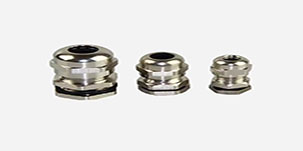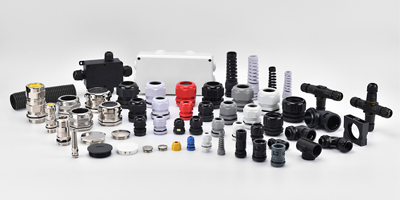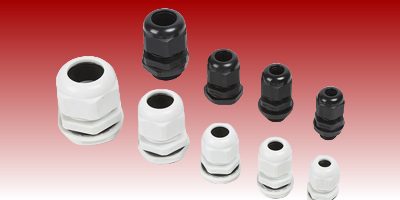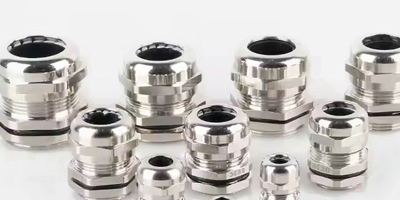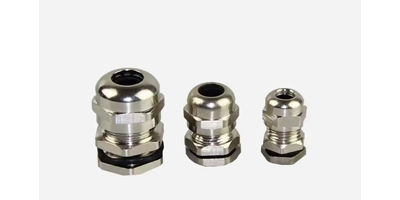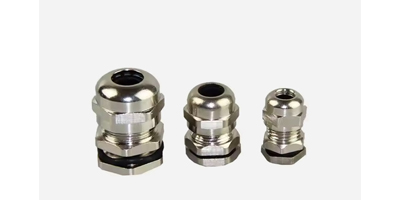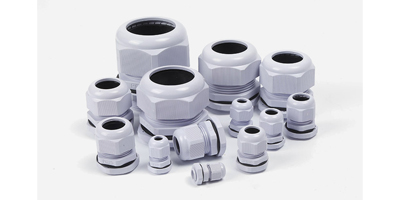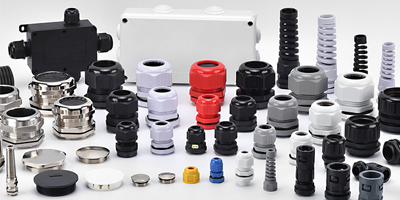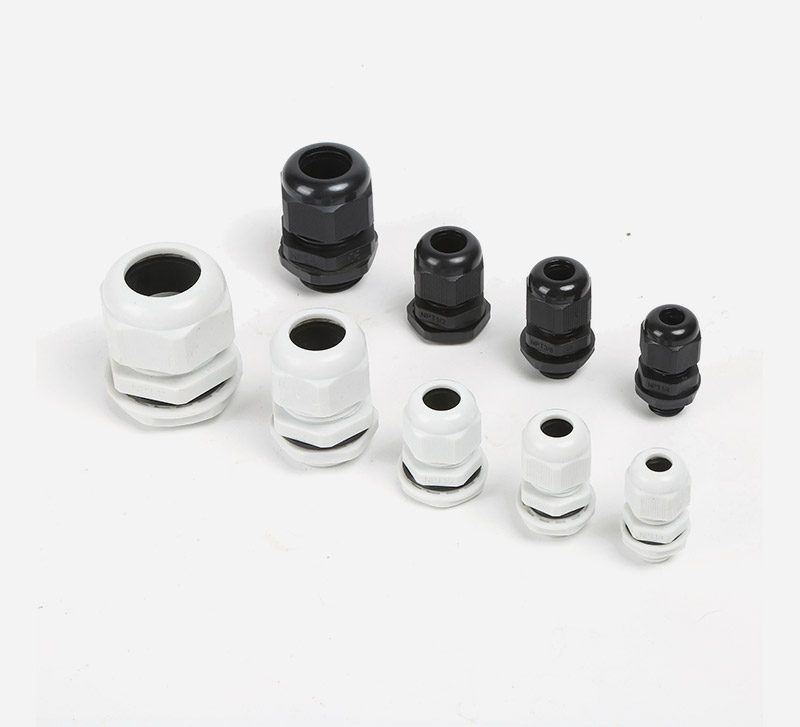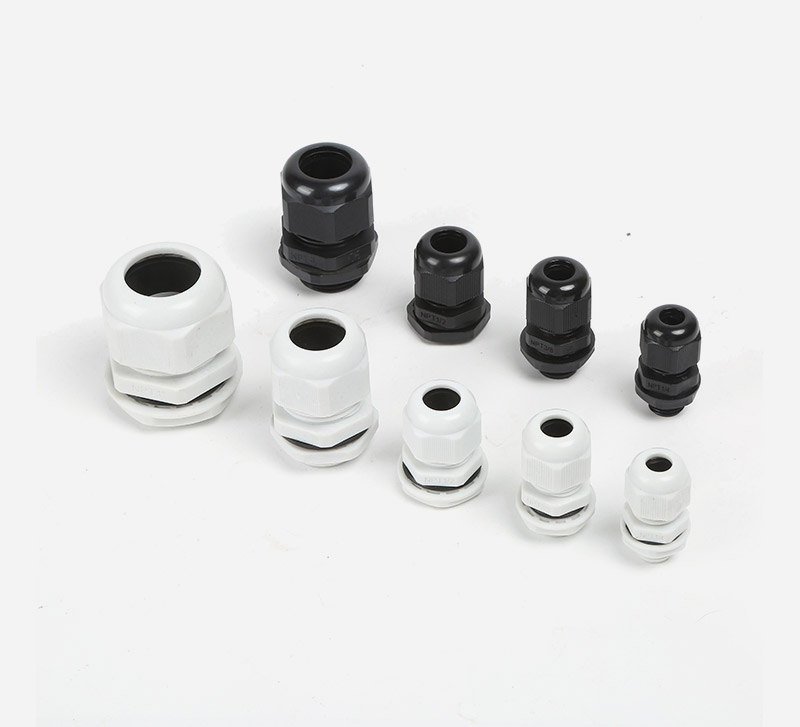In today's highly industrialized and electrified world, the connection and protection of various electrical equipment and wiring are of vital importance. Cable gland, as a crucial component, plays an indispensable role in numerous fields. Among the different types of cable glands, plastic cable glands have been increasingly recognized for their unique properties and wide range of applications. This article will not only explore the general aspects of cable glands but also delve deeper into the characteristics and uses of plastic cable glands, aiming to provide a comprehensive understanding of these important electrical components to readers, helping them make more informed decisions in various electrical installation scenarios.

I. Definition and Basic Structure
♦A cable gland, also known as a cable connector or cable strain relief, is a device used to secure and protect electrical cables where they enter or exit an enclosure, such as a junction box, control panel, or electrical equipment housingA cable gland, also known as a cable connector or cable strain relief, is a device used to secure and protect electrical cables where they enter or exit an enclosure, such as a junction box, control panel, or electrical equipment housing.
♦It typically consists of a body, usually made of metal or plastic, which provides the main structure and connection point. The body has a threaded portion for easy installation and tightening onto the enclosure.
♦Inside the gland, there are components like seals and grommets. These seals are crucial for preventing the ingress of dust, moisture, and other contaminants into the enclosure, safeguarding the sensitive electrical components within. The grommets help to grip the cable firmly, providing strain relief. This means that when the cable is pulled or moved, the stress is distributed evenly and not concentrated at the point of entry, reducing the risk of cable damage and ensuring the integrity of the electrical connection.
II. Types of Cable Glands
Metal Cable Glands
Brass Cable Glands: Brass is a commonly used material due to its excellent conductivity and corrosion resistance. Brass cable glands are suitable for a wide range of applications, especially in industrial settings where there may be exposure to harsh environments. They can handle high temperatures and are often used in power distribution systems, machinery, and manufacturing plants.
Stainless Steel Cable Glands: Stainless steel offers even greater corrosion resistance, making it ideal for outdoor and marine applications. These glands are resistant to saltwater corrosion, making them suitable for use in coastal areas, ships, and offshore installations. They are also used in food and beverage industries where hygiene is a concern, as stainless steel is easy to clean and maintain.
Plastic Cable Glands
Nylon Cable Glands: Nylon is a lightweight and durable plastic material. Nylon cable glands are popular in applications where weight is a factor, such as in aerospace and automotive industries. They are also resistant to many chemicals, making them suitable for use in chemical plants and laboratories. Additionally, nylon cable glands are often less expensive than their metal counterparts, making them a cost-effective choice for some applications. For example, in the automotive industry, nylon cable glands are widely used to connect various electrical components in the vehicle's engine compartment and interior, where their light weight helps reduce overall vehicle weight and improve fuel efficiency, while their chemical resistance ensures reliable performance in the presence of oils, fuels, and other automotive fluids.
Polypropylene Cable Glands: Polypropylene has good chemical resistance and is suitable for applications where the cable gland may come into contact with acids, alkalis, and solvents. It is commonly used in water treatment plants, swimming pools, and other environments where there is a risk of chemical exposure. In a water treatment facility, polypropylene cable glands are used to protect the electrical connections of pumps, valves, and monitoring equipment, preventing damage from the corrosive chemicals and water used in the treatment process.
III. Functions of Cable Glands
Cable Protection
Physical Protection: Cable glands provide a secure and tight grip on the cable, preventing it from being accidentally pulled out of the enclosure. This is especially important in areas where there is movement or vibration, such as in industrial machinery or vehicles. The gland acts as a barrier, protecting the cable from abrasion and damage caused by contact with other objects.
Environmental Protection: As mentioned earlier, the seals in the cable gland prevent the entry of dust, water, and other contaminants. This protection is vital for maintaining the proper functioning of electrical equipment. In a humid environment, for example, without proper sealing, moisture could enter the enclosure and cause short circuits or corrosion of the electrical components. Plastic cable glands, with their excellent sealing properties, can effectively keep out moisture and dust, ensuring the long-term reliability of electrical connections. Their resistance to UV radiation also makes them suitable for outdoor applications, where they can withstand prolonged exposure to sunlight without degrading.
Electrical Safety
Grounding: Many cable glands are designed to provide a reliable grounding connection. This is essential for dissipating electrical faults and preventing the buildup of static electricity. In a power distribution system, proper grounding through the cable gland helps to protect against electrical shocks and fires.
Shielding: In applications where electromagnetic interference (EMI) is a concern, cable glands with shielding capabilities are used. They help to contain the electromagnetic fields within the cable and prevent interference with other nearby electrical systems. This is particularly important in sensitive electronic equipment, such as in telecommunications and computer systems. Some plastic cable glands are designed with built-in shielding materials or structures to provide effective EMI protection, making them suitable for use in modern electronic devices and communication systems.
IV. Applications of Cable Glands
Industrial Applications
In factories and manufacturing plants, cable glands are used to connect cables to motors, control panels, and other machinery. They ensure the reliable operation of industrial equipment in harsh environments, withstanding vibrations, temperature fluctuations, and exposure to chemicals and dust. While metal cable glands are often used in heavy-duty industrial applications, plastic cable glands find their place in certain areas where their unique properties are advantageous. For instance, in some cleanroom environments within the electronics manufacturing industry, plastic cable glands are preferred due to their low particulate generation and resistance to static electricity, which helps protect the sensitive electronic components being produced.
In power generation plants, cable glands are used to connect cables to generators, transformers, and switchgear. They play a crucial role in the transmission and distribution of electrical power, providing a secure and safe connection. Here, metal cable glands are predominantly used for their high conductivity and robustness, but plastic cable glands may be employed in auxiliary or less critical electrical connections where their cost-effectiveness and ease of installation are beneficial.
Commercial Applications
In office buildings and commercial complexes, cable glands are used to connect cables for lighting systems, air conditioning units, and computer networks. They help to maintain a neat and organized cable management system, while also providing protection and safety. Plastic cable glands are commonly used in these settings due to their aesthetic appeal, as they can be color-coded to match the interior decor and provide a more visually pleasing cable installation. Their flexibility also allows for easier installation in tight spaces, such as behind false ceilings or in conduit runs.
In retail stores, cable glands are used to connect cables for display lighting, cash registers, and security systems. They ensure the reliable operation of these systems, which is essential for the smooth running of the business. The durability and chemical resistance of plastic cable glands make them suitable for use in retail environments, where they may be exposed to cleaning agents and other chemicals.
Residential Applications
In homes, cable glands are used to connect cables for electrical appliances, such as televisions, refrigerators, and washing machines. They provide a safe and secure connection, protecting the cables from damage and reducing the risk of electrical hazards. Plastic cable glands are often chosen for their ease of use and affordability in residential applications. They can be easily installed by homeowners or electricians without the need for specialized tools, and their wide range of sizes and types make them compatible with various household electrical cables.
In outdoor residential applications, such as for garden lighting and swimming pool equipment, cable glands with appropriate environmental protection are used to prevent water and moisture from entering the electrical connections. Plastic cable glands with waterproof seals are ideal for these applications, as they can withstand the outdoor elements and ensure the safety and longevity of the electrical installations.
V. Selection and Installation of Cable Glands
Selection Criteria
Cable Size and Type: The cable gland must be selected to match the size and type of cable being used. This includes the diameter of the cable, the number of conductors, and whether it is a power cable, data cable, or control cable. Using the wrong size or type of gland can result in a poor fit, leading to cable damage or ineffective protection. For plastic cable glands, it is important to ensure that the material is compatible with the cable insulation and jacket to prevent any chemical reactions or degradation over time.
Environmental Conditions: Consider the environment in which the cable gland will be used. If it is in a wet or humid area, a gland with a high level of waterproofing is required. In a corrosive environment, a gland made of corrosion-resistant material should be chosen. Temperature extremes also need to be taken into account, as some materials may degrade or lose their effectiveness at high or low temperatures. Plastic cable glands are available in different formulations to withstand a wide range of environmental conditions, from extreme cold to high heat and from corrosive chemicals to UV exposure.
Installation Process
Preparation: Before installation, ensure that the cable is clean and free from any debris or damage. Check the cable gland for any defects or missing parts.
Insertion: Insert the cable into the gland, making sure it is properly seated and centered. The grommets should grip the cable firmly but not too tightly to avoid damaging the cable insulation. When installing plastic cable glands, it is important to follow the manufacturer's instructions carefully, as some may require specific insertion techniques to ensure a proper seal and fit.
Tightening: Thread the gland onto the enclosure and tighten it using the appropriate tools. The gland should be tightened to the recommended torque to ensure a proper seal and connection. Avoid over-tightening, as this can damage the gland or the enclosure. With plastic cable glands, over-tightening can cause the material to crack or deform, compromising its effectiveness.
VI. FAQs about Plastic Cable Glands
Q1: Are plastic cable glands as durable as metal ones?
A: While metal cable glands are generally known for their robustness, plastic cable glands can also offer excellent durability depending on the application. For example, in environments where corrosion is a major concern, plastic cable glands made from materials like nylon or polypropylene can outperform metal ones. They are resistant to many chemicals and do not rust, which can extend their lifespan in certain conditions. However, in high-temperature and high-pressure applications, metal cable glands may be more suitable as some plastics may soften or deform.
A: Many plastic cable glands are now designed with built-in grounding features. They can provide reliable grounding connections, especially when used in combination with appropriate grounding wires and connectors. The conductive materials or coatings used in these glands ensure that electrical faults are dissipated safely. However, it's important to choose the right type of plastic cable gland and follow the installation instructions carefully to ensure proper grounding.
Q3: How do I know which plastic cable gland is suitable for my specific application?
A: Consider factors such as the environment (temperature, humidity, chemicals), the type of cable (size, insulation material), and the required level of protection (waterproofing, shielding). For example, if you are installing cable glands in a food processing plant, you would need a gland that is resistant to food-grade chemicals and can withstand frequent washdowns. If it's for an outdoor solar panel installation, a gland with good UV resistance and waterproofing would be essential. Consulting with a professional electrician or referring to the manufacturer's guidelines can also help you make the right choice.
In conclusion, cable glands, including plastic cable glands, are essential components in the world of electrical installations. Their proper selection and installation are crucial for ensuring the safety, reliability, and longevity of electrical systems. By understanding the different types, functions, and applications of cable glands, users can make informed decisions and choose the right gland for their specific needs, whether it be in an industrial, commercial, or residential setting. The unique properties of plastic cable glands offer a variety of advantages in many applications, and as technology continues to advance, their performance and versatility are expected to improve further, making them an increasingly important part of modern electrical systems.



